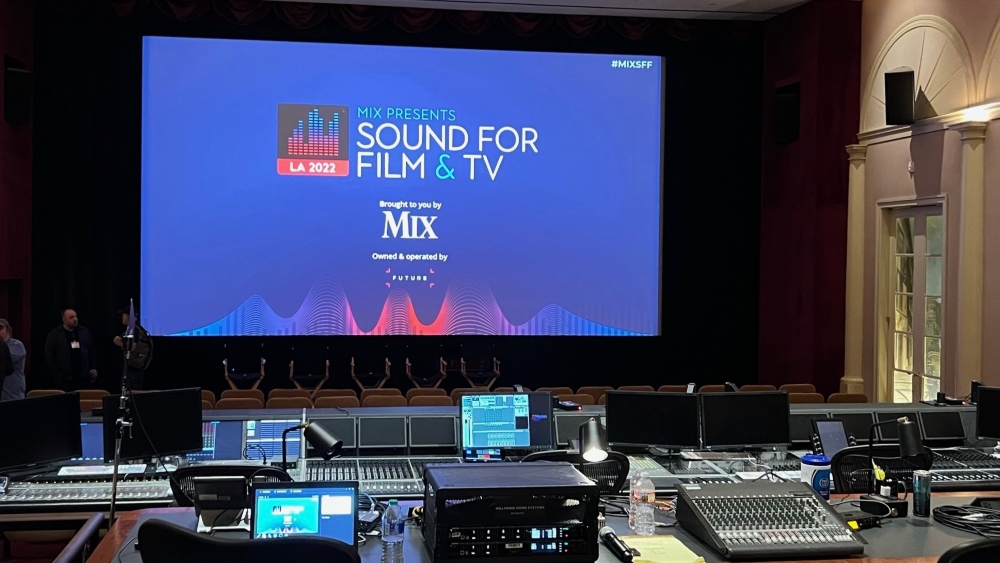
Last weekend, Mix magazine’s annual Sound for Film & TV conference returned to its first in-person event since the COVID-19 pandemic began, bringing thousands to the Sony lot, where the event has been held since 2014.
Mix editor Tom Kenny led the opening keynote address, introducing a panel discussion on “Sound Changes” that was focused on “the nature of today’s re-recording stage, the rise of streaming services, new technologies and formats, and the emergence of the sound designer/mixer, with a few fun stories tossed in.”
Panelists included Will Files, Re-Recording Mixer/Supervising Sound Editor at Pacific Standard Sound (The Batman, Stranger Things); Pacific Standard Sound Supervising Sound Editor/Re-Recording Mixer and Sound Designer Craig Henighan (The Whale, Stranger Things); and Warner Bros. Supervising Sound Editor/Re-Recording Mixer Julian Slater (Last Night in Soho, The Bad Guys).
Before the panel began, Kenny acknowledged Sony’s Executive Vice President of Post-Production, the Oscar-winning Sound Editor Tom McCarthy, who was also in attendance. McCarthy, who plans to retire by the end of the year, arose to a round of applause.
Kenny shifted gears into the panel’s topic, noting that Walter Murch was largely responsible for the idea of a sound producer, a person who would follow the sound assets from the beginning through delivery. “But now that idea has accelerated,” he noted, asking for feedback from the panelists.
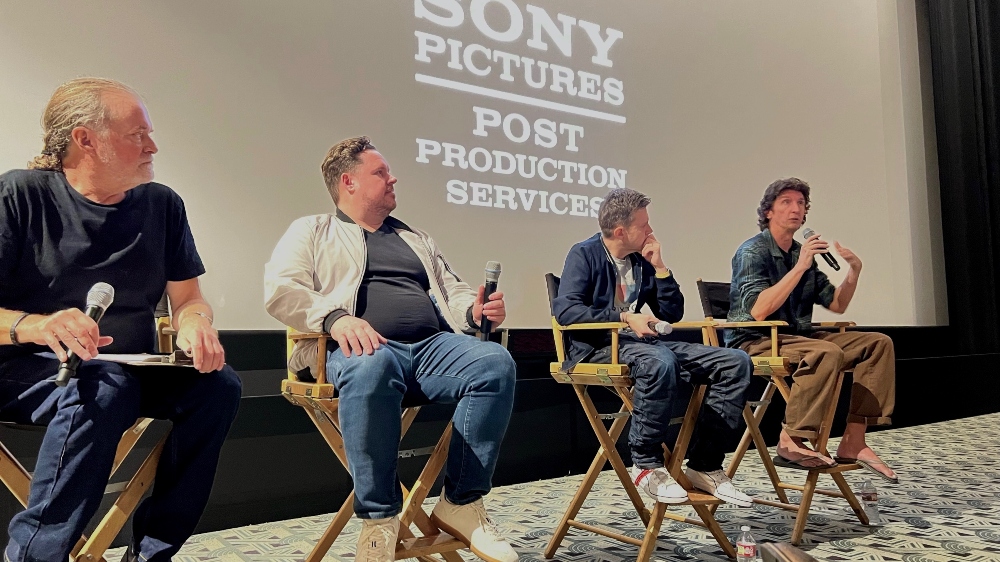
Files explained that he “cut his teeth at Skywalker” where that was an accepted idea. “Part of it is creative control to see it all the way through to the end,” he said. “Plus, clients wanted to deal with one person.” Slater said that, although he found more resistance to the idea of a designer/mixer in Los Angeles, it was accepted because it’s “super useful.” But, he added, “it’s also good to have fresh eyes.”
Henighan agreed that, “it’s all perspective.” “Stepping out of the mixer or supervisor role and just being an audience member is important,” he said. “Designers and mixers can get very attached [to what they’ve created] but creative people need the director — it’s important for them to be constricted.”
Kenny asked about the influence of technology on their work.
“In previous days, prior to ProTools, sound editing was a dark art,” said Slater. “Using the same technology for editing and mixing has totally changed the dynamics of what we do.”
“I can mix in my sound design room or on a stage,” added Files. “Having it be easy to move it to another stage is a huge advantage, especially for sound design.”
“It’s always about slowing it down enough to listen to what you’re doing,” said Henighan.
“Stepping back from technology and looking at it as a piece of art,” is also important, noted Slater, who added that “something magical happens on the final mix stage.”
The event included in-depth sessions on The Batman and Dune (to be covered in separate articles) and The Orville as well as sessions on technology, sound design and composers. Click here to see the full conference schedule.
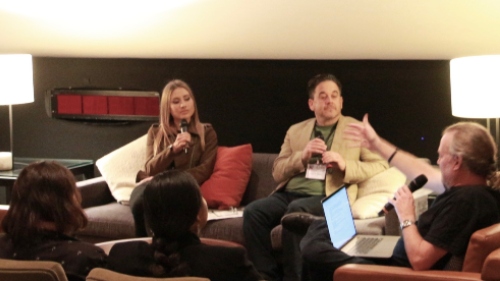
Sound Design for Animated Feature Luck
Moving on, Kenny moderated a discussion with Re-Recording Mixer Gary A. Rizzo, CAS and Foley Supervisor Devon Kelley to talk about the sound design for Luck, an animated feature from Apple Original Films and Skydance Animation. The movie is about Sam Greenfield, the unluckiest person in the world who finds herself in the land of Good Luck (the flip side is the land of Bad Luck), where she must unite with magical creatures to turn her own luck around.
Kelley noted the importance of foley in animated features.
“Foley anchors the animation in the real world, giving the actions texture and weight,” she said. “In live-action, you have Foley of things recorded outdoors. In animation, you have no production Foley, so it’s even more important to create a real-world environment for everything. Effects add that big cherry on top of anything outside of this world.”
Rizzo noted that, “the effects can blow the hyper-real environment even bigger than you imagined.” “How big and fanciful to play the effects in the Good Luck and Bad Luck worlds was a conscious choice,” he said. “It had to be fluid.”
Kelley said they wanted to emphasize the contrasts when Sam enters the world of Good Luck — where everything is smooth and perfectly choreographed — from the human world.
“We could add the disruptions she brings to the Good Luck world,” said Rizzo.
“The movie should play like a Fred Astaire dance,” he continued. “It’s funny but also has a chaotic choreography.”
They both pointed to the tensions in a scene where Sam has her first opportunity to be on her own.
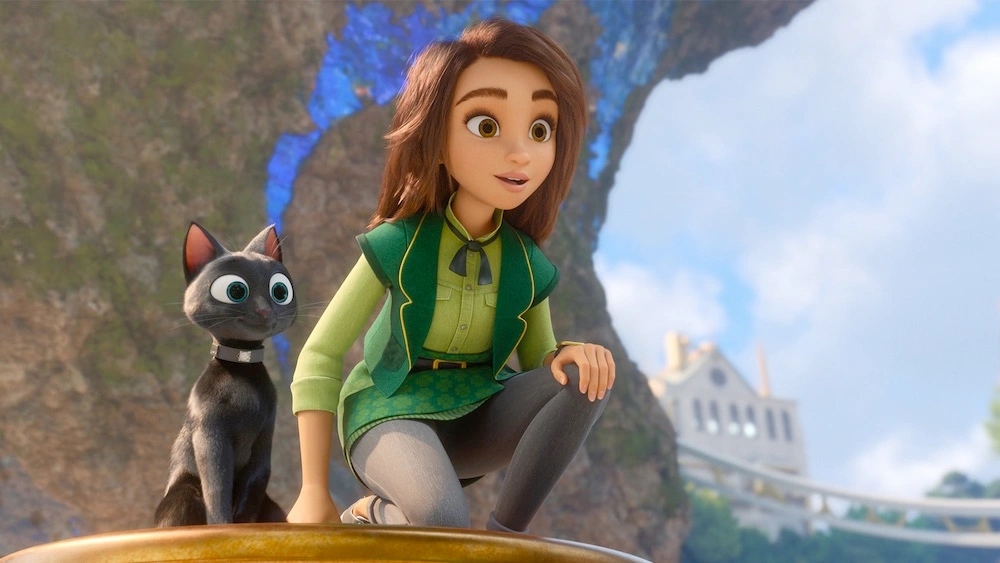
“It’s one of the first scenes we worked on,” said Kelley. “It makes Sam a more lovable character and we both cut almost everything in that scene. Foley and FX covered everything, and we made decisions as to which played a bigger role.”
Kelley added that, “to emphasize the way things play in a cinematic world, effects brought a lot, like a more interesting squeak of the toaster, for example.” “Effects and Foley play off each other and embellish each other to make it funnier,” she said.
Kelley also pointed to the work of Sound Designers Pete Horner and Josh Gold to create some of the textures of the Good Luck world and Bad Luck world.
“Pete did a lot of work on the design of the good luck crystals and the bad luck crystals,” said Kelley. “The good luck crystals were sourced from a Christmas-themed dog collar that he recorded. It sounds like a rain stick. The bad luck crystals were made with pill-shaped magnets.”
Rizzo also praised John Debney’s score.
“He’s very good with Sam’s theme and [the cat] Bob’s theme,” he says. “It’s wonderful music. In my job, I’m constantly evaluating to see what works and what doesn’t — and, emotionally, what we need out of the scene. It could be a sound effect or it could be music. It’s one of the billions of decisions we have to make every day.”
Rizzo said that “the fun part of mixing” was to get into director Peggy Holmes’ head.
“You’re always thinking about tone, space, environment — everything,” he says. “Mixing for animated films, you’re creating backgrounds in acoustical space.”
They all mentioned the chase scene as one of their favorites in the movie. “It’s a nod to Looney Tunes and Abbott & Costello,” said Kenny. “And it’s the most innocent chase scene you’ll ever see.”
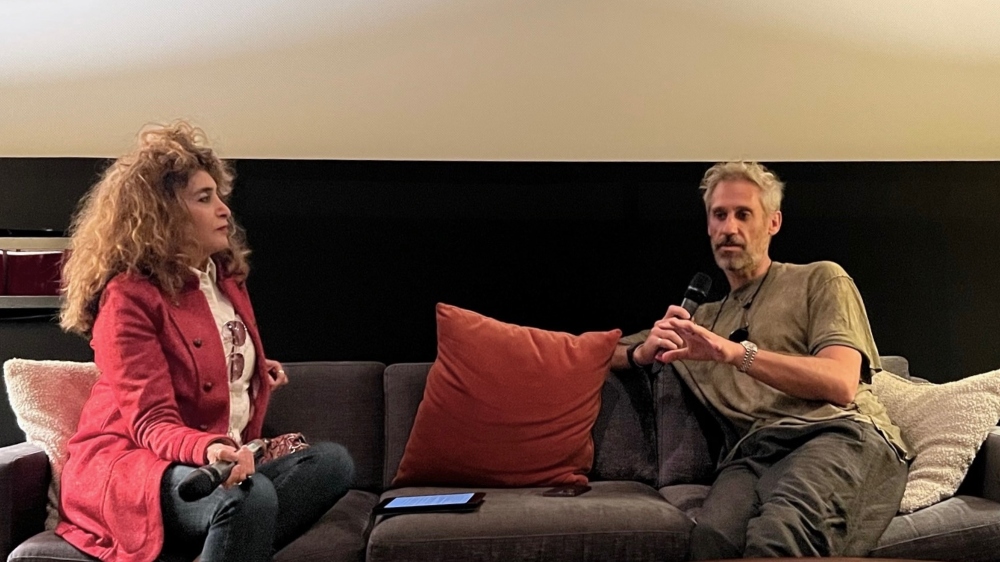
Composer Spotlight: Rob Simonsen
Music journalist Lily Moayeri guided a discussion with composer Rob Simonsen (The Adam Project, Ghostbusters: Afterlife), fresh from the Venice International and Toronto International Film Festivals where his latest project, the character-based drama The Whale from director Darren Aronofsky, got long-standing ovations and drummed up early Oscar buzz. The movie — which features Brendan Fraser as an obese man seeking redemption — opens in the U.S. on Dec. 9.
Moayeri asked Simonsen to recount how he got the job of composing the score. In late September, on a Monday morning, he said, he got a text from Ivan Reitman.
“Ivan said that he wrote a love letter about me to Darren Aronofsky,” said Simonsen. “Then my agent called and asked if I was available to speak with Darren. We spoke over Zoom and he told me a bit about the film, and we got to know each other.”
“He’s one of my favorite filmmakers and I always said I wanted to work for the Aronofskys of the world, so it was pretty amazing when Aronofsky himself called,” he said. Aronofsky then sent him the film — which had no score.
“There was no temp music,” said Simonsen. “And I know that music is hugely important in Darren’s films.”
“I watched it and was rendered a teary mess by the end,” confessed Simonsen. “It’s a very powerful film and Brendan Fraser is so brilliant. After I finished crying, I texted Darren and said ‘let’s talk in the morning.’
They talked that next morning.
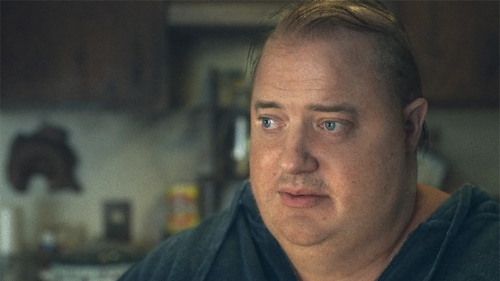
“He asked me what I thought, and I gave him some rough musical ideas,” he said. “The vibe was good and he said, let’s do it. Two minutes later, an offer came through. It was that fast.” Since Simonsen was in Los Angeles and Aronofsky in New York, the composer made periodic trips to New York.
“My first thought on watching the film was — it’s so good without music — I can’t fuck it up,” said Simonsen. “It’s a quiet, contained film that all takes place in his apartment with a few exterior shots, and the characters come in and out. Fraser’s performance is very subtle and reserved.” The music, he thought, should “appear and disappear smoothly — and have the sense of being underwater.”
One of his initial ideas was to contact a flute maker he met in Belgium who makes overtone flutes.
“What he does is so special that I had thought I would only use it for a personal project,” said Simonsen. “But when I saw The Whale and its nautical theme and sound and production design, I. knew that was one path in. The overtone flute sounds like a musical blowhole. It’s as if a flute and a digeridoo had a baby.”
He contacted the flute maker and asked him to make “the largest overtone flute” that he could. The end result was over 20 feet long, built in sections.
“He then recorded it in a church and I got all these beautiful pieces,” said Simonsen, who also used an heirloom 1800s pump organ borrowed from a friend. “I played some really dark stuff that ended up being too dark for the film,” he admitted. “But I wove some of the drones into the overtone flute. Both had a living organic flavor that, hopefully, sounds unique.”
Simonsen noted that the performance of Sadie Sink — Fraser’s estranged daughter — is “a white-hot knife” in the movie.” The sense of being underwater, with smooth appearances and disappearances, he said, softened this, and implied “that Brendan is adrift in the sea of his emotions.” “Darren’s musical identities in his films are very strong,” he said. “I’m a big fan of all the scores he did, so I knew I was stepping into big shoes, but I also wanted to bring my own voice.”
Audience members asked Simonsen about some of his other credits, including his orchestration of Kate Bush’s 1985 song “Running up the Hill,” which skyrocketed back into the music charts thanks to some show you might have heard of.
“I heard through the grapevine that the Duffer brothers were fans of mine,” said Simonsen. “Shawn Levy, one of the Stranger Things directors also directed The Adam Project, and the Duffer brothers freaked for that score. They were going for the Amblin 1980s sound.”
He reported that there are four moments of orchestral overlay to the Kate Bush song, when Eleven (Millie Bobby Brown) is running; he also composed for the moment when Eleven’s father dies, an instrumental cover for the end credits and the finale of the season.
“We were all so excited to be working together,” said Simonsen, who said he worked with the London Contemporary Orchestra. “These were big moments for a flagship show and Netflix came in with support.”
Meanwhile, for Ghostbusters: Afterlife, said Simonsen, [director] Jason Reitman told him it was “about carrying on the [Ghostbuster] legacy.”
“It was clear we were custodians of what when before,” he said, noting that the score was by Elmer Bernstein. “The music was important to let the audience know they were in hands that were respectful of the franchise.”
He said he went deeply into Bernstein’s “proclivities as a composer in general and his typical ways of approaching things.”
“I have my own proclivities, so I had to find my own responses,” he said. “It was a really special experience — like going back to school and having a chance to weave together all the things I grew up with.”
Stay tuned for further coverage from Mix’s annual Sound for Film & TV conference.





